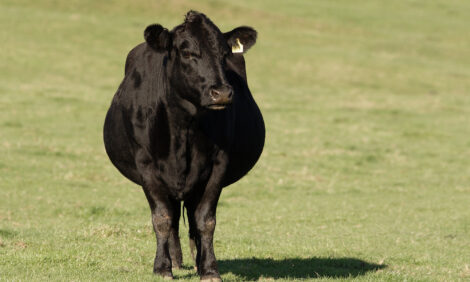



Finding the Early Stages of Foot and Mouth Disease
Research by scientists at the USDA have identified where the virus that causes foot-and-mouth disease (FMD) begins infection in cattle.The research, The Early Pathogenesis of Foot-and-Mouth Disease in Cattle After Aerosol Inoculation - Identification of the Nasopharynx as the Primary Site of Infection, which is published in the November edition of Veterinary Pathology could lead to the development of new vaccines to control and potentially eradicate FMD.
The research was carried out by J. Arzt1, J. M. Pacheco1 and L. L. Rodriguez from the Agricultural Research Service (ARS) Foreign Animal Disease Research Unit at the Plum Island Animal Disease Center at Orient Point, New York.
The researchers said that in order to characterise the early events of foot-and-mouth disease virus (FMDV) infection in cattle following a simulated natural exposure, 16 steers were aerosol inoculated with FMDV and then killed at various times.
Serum, nasal swabs, and oral swabs samples were collected from each steer antemortem and postmortem. In all a total of up to 40 tissue samples were taken frfom each animal.
These were screened for FMDV by virus isolation and for FMDV RNA by real-time reverse transcription polymerase chain reaction.
Tissues that tested positive for FMDV or viral RNA were examined by immunohistochemistry and multichannel immunofluorescence microscopy.
The scientists said that in previremic steers, FMDV was most consistently discovered in the nasopharyngeal tissues, thereby indicating this region as the most important site of primary viral replication.
They said that the earliest site of microscopic localisation of FMDV antigens was the lymphoid follicle-associated epithelium of the pharyngeal mucosa-associated lymphoid tissue of the nasopharynx at six hours after the aerosol inoculation.
At early time points after aerosol inoculation, viral antigens were found together with cytokeratin-positive pharyngeal epithelial cells. Intraepithelial FMDV-negative, MHCII/CD11c-double-positive dendritic cells were present in close proximity to FMDV-positive cells, the researchers said.
The onset of viremia coincided with marked increase of viral loads in pulmonary tissues and with substantial decrease of viral detection in nasopharyngeal tissues.
The research team said that the data indicate that following aerogenous exposure to FMDV, the temporally defined critical pathogenesis events involve:
- primary replication in epithelial cells of the pharyngeal mucosa-associated lymphoid tissue crypts and
- subsequent widespread replication in pneumocytes in the lungs, which coincides with
- the establishment of sustained viremia.
Further Reading
| - | You can find the full report by clicking here. |


